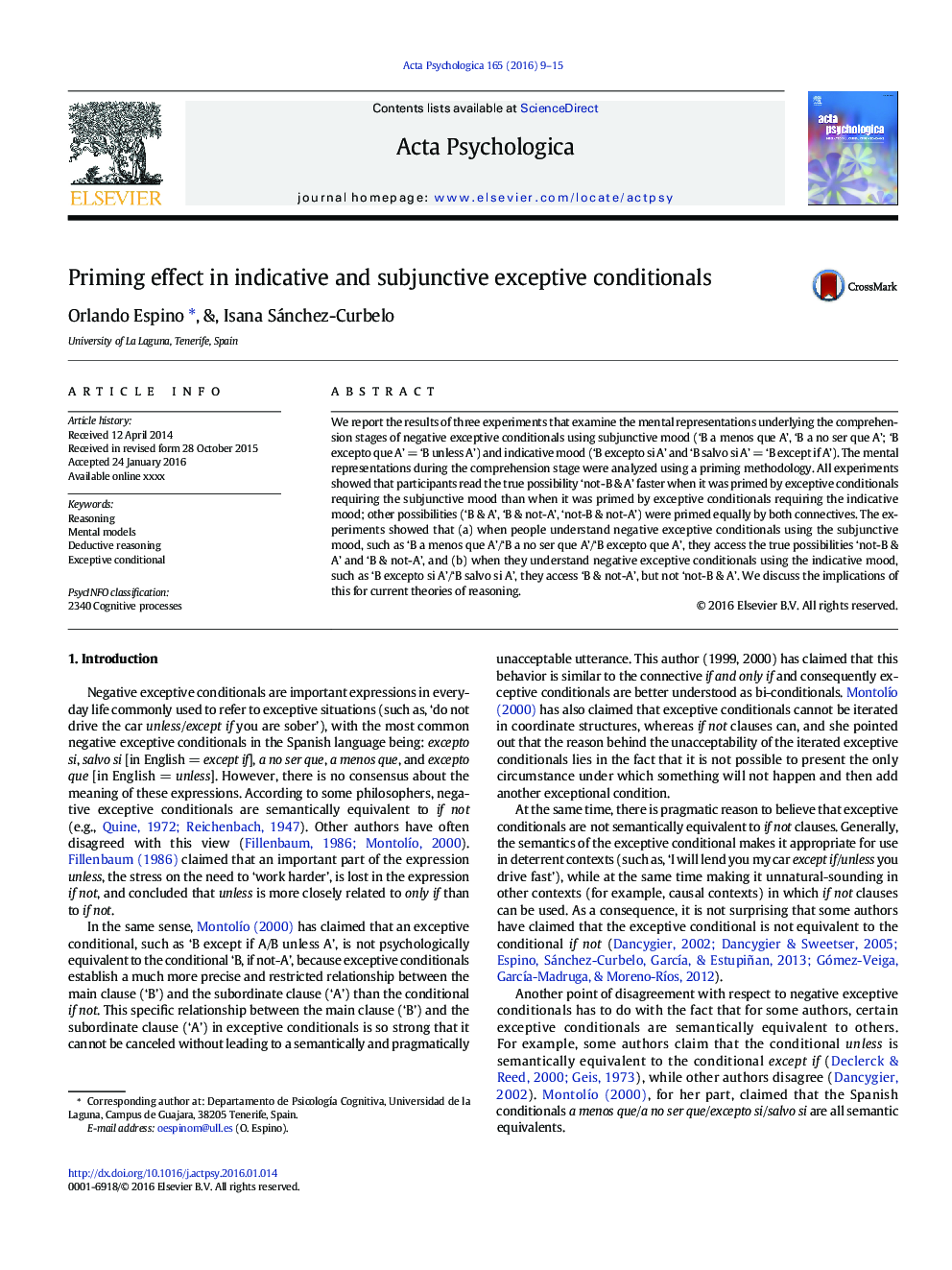| Article ID | Journal | Published Year | Pages | File Type |
|---|---|---|---|---|
| 919608 | Acta Psychologica | 2016 | 7 Pages |
Abstract
We report the results of three experiments that examine the mental representations underlying the comprehension stages of negative exceptive conditionals using subjunctive mood ('B a menos que A', 'B a no ser que A'; 'B excepto que A'Â =Â 'B unless A') and indicative mood ('B excepto si A' and 'B salvo si A'Â =Â 'B except if A'). The mental representations during the comprehension stage were analyzed using a priming methodology. All experiments showed that participants read the true possibility 'not-B & A' faster when it was primed by exceptive conditionals requiring the subjunctive mood than when it was primed by exceptive conditionals requiring the indicative mood; other possibilities ('B & A', 'B & not-A', 'not-B & not-A') were primed equally by both connectives. The experiments showed that (a) when people understand negative exceptive conditionals using the subjunctive mood, such as 'B a menos que A'/'B a no ser que A'/'B excepto que A', they access the true possibilities 'not-B & A' and 'B & not-A', and (b) when they understand negative exceptive conditionals using the indicative mood, such as 'B excepto si A'/'B salvo si A', they access 'B & not-A', but not 'not-B & A'. We discuss the implications of this for current theories of reasoning.
Related Topics
Life Sciences
Neuroscience
Cognitive Neuroscience
Authors
Orlando Espino, Isana Sánchez-Curbelo,
